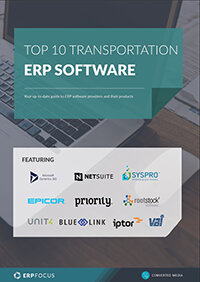Inventory visibility: three best practices
Showing customers what you have in stock, and where you have it, is a tactic that an increasing number of merchants apply to their webshops. They answer to the customers’ demand for certainty and reliability while shopping online.
Shoppers want to be sure that the products they to order are actually in stock and will be delivered to them within a certain timeframe. The inventory visibility tactic proves to be successful: Research by Forrester has shown that at least 41% of retailers who have enabled inventory visibility have seen a positive impact on sales.
So, inventory visibility is important. But how does it work, and is it really that necessary? Let’s look at three best practises for inventory visibility.
1. Online inventory visibility for brick-and-mortar stores
The internet has changed the way people research and buy products. Not so long ago, people would go to a store and buy the product they needed. Now, 81% percent of shoppers first research products (and prices) online before they make a purchase. It is therefore important that merchants make sure the information shoppers are looking for is available at all times.
Customers decide on buying a product based on various criteria. Unsurprisingly, they usually look at prices first. However, the second most researched item is whether the product they is available in the store they want to buy the product in. This means that merchants who show the inventory in their stores, have an advantage towards those who don’t.
2. Webshops: show delivery times
Online shopping is becoming a popular way to buy products. While ordering online, customers want to know how long it will take for the product to be delivered to them. There are two ways to incorporate inventory visibility into a webshop.
Guide: seven steps to selecting distribution ERP
The first is simply showing how many items you have left in stock. This will tell customers that they will not have to wait for their products for too long. However, most shops choose to show their delivery times instead. After all, this is what shoppers are looking for in the end. Having fast delivery times can persuade customers to buy at your shop. Do not worry if your delivery times are longer than those at your competitor. Customers might not need the product right away and still choose your webshop based on other considerations (such as price and trustworthiness of the webshop) .
3. Omnichannel strategies: picking up in store
In showing inventory, include in which stores people can find certain products. There is a growing trend of customers preferring in-store pick up rather than home deliveries. This provides a higher level of convenience and eliminates the risk of orders getting lost or stolen.
Giving customers the option to pick up goods will give them a sense of control, the ability to save on shipping costs and the opportunity to ask face-to-face questions to staff. Also, recent ICSC research shows that 69% of customers coming to a store, buy more goods while they are there. Omnichannel inventory visibility is a win-win for all parties involved.
Choosing the right system is key
Stay ahead of competitors by making your inventory visible! The only way to realise a successful inventory visibility system is by adopting the right technology.
A solid OMS/ERP solution can help out. Inventory management tools track inventory in real-time, across multiple sales channels. This information can be directly linked to your online platforms, making sure that valuable inventory information is accessible to customers at all times.
Free white paper

7 steps to selecting distribution ERP
Get expert advice on distribution ERP selection and requirements analysis

Featured white papers
-

Top 10 Distribution Software Comparison
Compare the best distribution ERP systems available today
Download -

Top 10 Transportation ERP Software Comparison
Get your free comparison of the top 10 transportation ERPs
Download -

7 steps to selecting distribution ERP
Get expert advice on distribution ERP selection and requirements analysis
Download
Related articles
-

ERP for Food Distributors: Key Functionality
In a modern world where products are tailored to consumers, why should ERP for food distributors ...
-

Secret KPI: Why Your ERP Implementation Team Matters More Than Software
Learn how Godlan ensures successful ERP implementation for manufacturers with proven strategies &...
-

Nine signs you need an eCommerce ERP integration
A guest blog from Brightpearl discussing eCommerce ERP and integration

